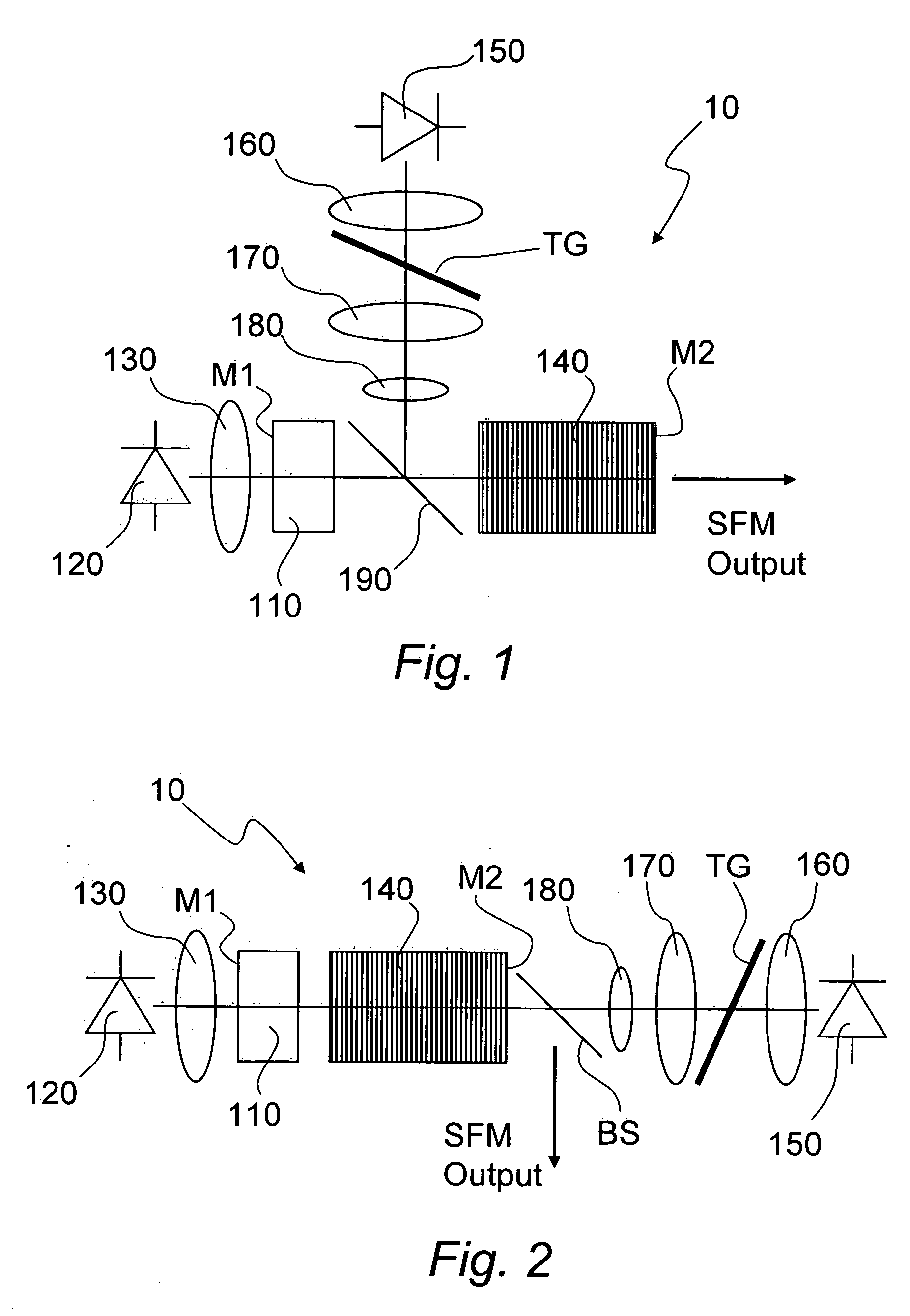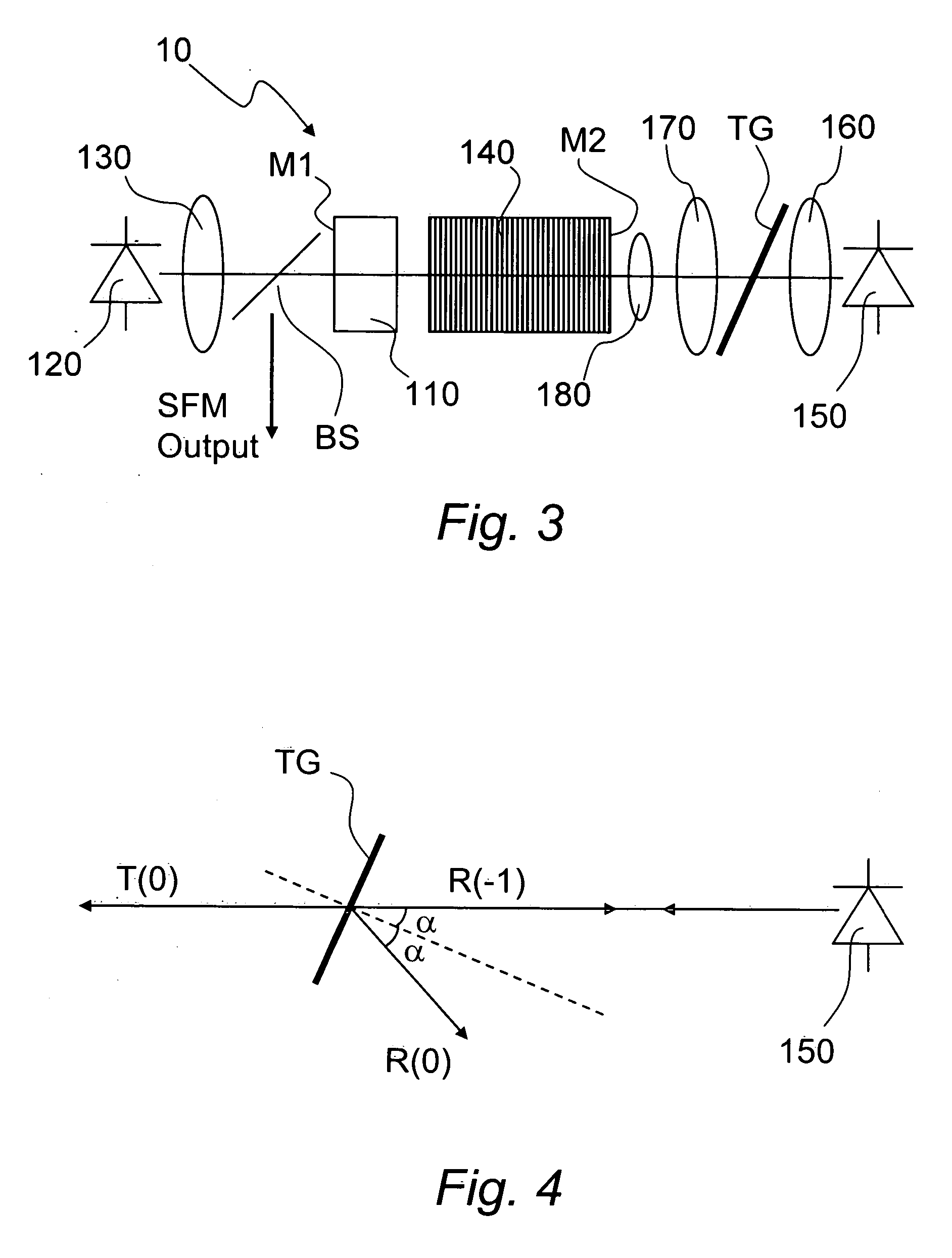Coherent light source based on sum-frequency mixing
- Summary
- Abstract
- Description
- Claims
- Application Information
AI Technical Summary
Benefits of technology
Problems solved by technology
Method used
Image
Examples
Embodiment Construction
[0032] Some practical implementations of the present invention will now be described with reference to the drawings.
[0033]FIG. 1 shows schematically a first embodiment of a light source 10 according to the invention. The light source comprises an optically pumpable solid-state gain material 110 and a first diode laser (DL) 120 arranged to provide radiation for optical pumping to the gain material 110. In the optical path between the first DL 120 and the gain material 110, there is provided beam shaping optics 130 for transforming the beam output from the DL into a shape appropriate for pumping of the gain material 110. The gain material 110 is provided with a first cavity mirror M1 on the side facing the pumping DL 120. The light source further comprises an optically non-linear material 140 in the form of a periodically poled crystal. On the side facing away from the pumping DL 120, the periodically poled crystal is provided with a mirror constituting a second cavity mirror M2. Eff...
PUM
 Login to View More
Login to View More Abstract
Description
Claims
Application Information
 Login to View More
Login to View More - R&D
- Intellectual Property
- Life Sciences
- Materials
- Tech Scout
- Unparalleled Data Quality
- Higher Quality Content
- 60% Fewer Hallucinations
Browse by: Latest US Patents, China's latest patents, Technical Efficacy Thesaurus, Application Domain, Technology Topic, Popular Technical Reports.
© 2025 PatSnap. All rights reserved.Legal|Privacy policy|Modern Slavery Act Transparency Statement|Sitemap|About US| Contact US: help@patsnap.com



